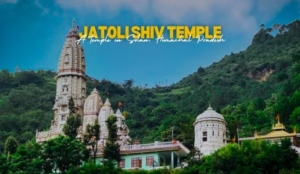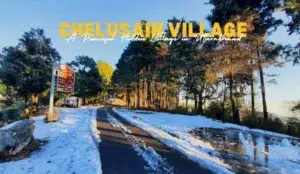“🌄 Explore the Epic Bali Pass Trek 🏞️ | Your Gateway to Himalayan Adventure! Discover the untamed beauty today! #BaliPass”
About of Bali Pass:
Bali Pass, situated in the Indian state of Uttarakhand, is a picturesque high-altitude mountain pass in the Garhwal Himalayas. It serves as a gateway to unparalleled natural beauty and adventurous trekking experiences.
The Bali Pass is a high mountain pass located in the Indian state of Uttarakhand, in the Garhwal region of the Indian Himalayas. It is a popular trekking destination and is known for its stunning panoramic views of the surrounding peaks and valleys.
The trek to Bali Pass typically starts from the village of Sankri in the Uttarkashi district of Uttarakhand. Trekkers follow a challenging route that takes them through lush green meadows, dense forests, and eventually to the Bali Pass itself. The pass is situated at an altitude of approximately 16,207 feet (4,940 meters) above sea level, making it a high-altitude trek that requires proper acclimatization and trekking experience.
Bali Pass offers breathtaking vistas of the Himalayan peaks and is a favorite among adventure enthusiasts and nature lovers. It’s important to note that the difficulty level of this trek makes it suitable for experienced trekkers.
History of Bali Pass:
- Ancient Trade Route: Historically, Bali Pass was an essential trade route connecting the Tons Valley in Uttarakhand with the Yamuna Valley in Himachal Pradesh. Traders used this route for centuries to exchange goods between the two regions.
- Mythological Significance: Like many places in the Himalayas, Bali Pass has its share of mythological stories. It is believed to be associated with Lord Hanuman, who is said to have crossed this pass while carrying the Sanjeevani herb to save Lord Lakshmana.
- Trekking Renaissance: In recent years, Bali Pass has gained popularity among trekkers and adventure enthusiasts. Its challenging yet rewarding trekking trails have attracted adventurers from around the world.
- Trekking Routes: The trek to Bali Pass often starts from Sankri or Taluka village. From there, trekkers ascend through dense forests, alpine meadows, and serene lakes, offering an opportunity to witness the diverse flora and fauna of the region.
- Glacial Lakes: One of the highlights of the trek is the encounter with several glacial lakes, including the pristine Ruinsara Lake, which adds to the allure of the journey.
- Cultural Encounters: Along the route, trekkers have the chance to interact with the local villages, such as Osla and Seema, experiencing their unique culture and way of life.
- Bali Pass Summit: The summit of Bali Pass, at an elevation of around 4,900 meters (16,076 feet), rewards trekkers with panoramic views of the surrounding peaks, including Swargarohini and Bandarpoonch.
- Best Time to Trek: The ideal time for the Bali Pass trek is during the summer and early autumn months, from May to October, when the weather is conducive to trekking.
In conclusion, Bali Pass is not just a mountain pass; it’s a journey through history, mythology, and natural splendor. Whether you’re drawn to its ancient trade roots, mythological stories, or the thrill of a high-altitude adventure, Bali Pass offers a remarkable experience for all who seek to explore it.
Why is Bali Pass Famous:
- Spectacular Scenery: Bali Pass is renowned for its breathtaking natural beauty. It offers trekkers panoramic views of the Garhwal Himalayas, including snow-clad peaks, lush meadows, and pristine glacial lakes.
- Challenging Trekking Trails: The pass is famous among trekkers for its challenging yet rewarding trekking routes. It provides a sense of accomplishment to those who successfully navigate its rugged terrain.
- Ancient Trade Route: Bali Pass holds historical significance as an ancient trade route connecting the Tons Valley in Uttarakhand to the Yamuna Valley in Himachal Pradesh. Its historical legacy adds to its fame.
- Mythological Connection: Like many Himalayan locations, Bali Pass has a mythological connection. It is believed to be a part of Lord Hanuman’s journey during the Ramayana, adding a touch of mystique to the pass.
- Glacial Lakes: The trek to Bali Pass leads you past several glacial lakes, including the stunning Ruinsara Lake. These azure waters surrounded by snow-capped peaks are a highlight of the journey.
Things to Do in Bali Pass:
- Trekking Adventure: Bali Pass offers trekkers a challenging adventure through its dense forests, alpine meadows, and high-altitude terrain. The trek rewards with stunning vistas and a sense of accomplishment.
- Visit Ruinsara Lake: A must-do on the Bali Pass trek is visiting Ruinsara Lake. Take in the pristine beauty of this glacial lake and the reflections of the surrounding peaks.
- Explore Osla and Seema Villages: Along the trekking route, you’ll encounter picturesque villages like Osla and Seema. Interact with the friendly locals and learn about their traditional lifestyles.
- Wildlife Spotting: Keep an eye out for the diverse Himalayan wildlife, including musk deer, Himalayan monal, and various species of pheasants, making the trek a paradise for nature enthusiasts.
- Photography: Bali Pass provides ample opportunities for photography. Capture the awe-inspiring landscapes, colorful flora, and the unique cultural elements of the region.
- Camping: Experience the thrill of camping in the lap of the Himalayas. Camping near Ruinsara Lake or other scenic spots adds a memorable dimension to your journey.
- Stargazing: Clear nights at high altitudes offer an excellent opportunity for stargazing. Marvel at the pristine night sky and the brilliance of the stars.
- Connect with Spirituality: Bali Pass’s serene environment allows for moments of reflection and meditation. It’s an opportunity to connect with nature and find inner peace amidst the mountains.
In conclusion, Bali Pass’s fame arises from its stunning natural landscapes, challenging trekking trails, historical significance, and mythological connections. Whether you’re an adventure seeker, a nature lover, or a history enthusiast, Bali Pass has something to offer, making it a memorable destination in the Garhwal Himalayas.
- Location: Bali Pass is situated in the Garhwal Himalayas of Uttarakhand, India. It lies in close proximity to the border between Uttarakhand and Himachal Pradesh.
- Elevation: The pass is at an elevation of approximately 4,900 meters (16,076 feet) above sea level, making it a high-altitude trekking destination.
- Historical Trade Route: Bali Pass has a historical legacy as an ancient trade route between the Tons Valley in Uttarakhand and the Yamuna Valley in Himachal Pradesh. Traders used this route for centuries to exchange goods.
- Trekking Paradise: Today, Bali Pass is renowned for its challenging trekking trails, drawing trekkers and adventure enthusiasts from across the globe. The trek offers a mix of natural beauty, cultural experiences, and historical significance.
- Mythological Significance: According to local beliefs, Bali Pass is associated with Lord Hanuman’s journey during the Ramayana. It is said to be a part of his route while carrying the Sanjeevani herb to save Lord Lakshmana.
- Bali Pass Trek Duration: The duration of the trek can vary depending on the route taken, but it typically takes around 6 to 8 days to complete the trek, including acclimatization and exploration of nearby attractions.
How to Reach Bali Pass:
- By Air: The nearest airport to reach Bali Pass is Jolly Grant Airport in Dehradun, Uttarakhand. From Dehradun, you can hire a taxi or take a bus to reach the trekking base, typically Sankri or Taluka village.
- By Rail: Dehradun Railway Station is the closest station. From there, proceed to Sankri or Taluka via road, which may require multiple modes of transportation.
- By Road: Sankri and Taluka are the starting points for the Bali Pass trek. You can reach these villages by road from major cities like Dehradun or Mussoorie. The journey involves picturesque mountain roads and can take several hours.
- Trekking Route: The actual trek to Bali Pass begins from Sankri or Taluka village. Trekkers typically follow the route through dense forests, charming villages, alpine meadows, and glacial lakes before reaching the pass.
- Permits: Ensure you have the necessary permits for the trek, which can be obtained from local authorities. If you’re a foreign traveler, make sure you have the required permissions to visit restricted areas near the border.
- Local Guides: It is advisable to hire a local trekking guide who is familiar with the region and its terrain. Guides provide valuable insights and enhance safety during the trek.
- Best Time to Trek: The best time to trek to Bali Pass is during the summer and early autumn months, from May to October, when the weather is relatively stable and conducive to trekking.
In summary, Bali Pass is a high-altitude trekking destination in the Garhwal Himalayas, offering a blend of history, mythology, and natural beauty. To reach this enchanting pass, you can use air, rail, and road transportation options, with Sankri or Taluka village serving as the trek’s starting points. Proper permits, local guides, and careful planning are essential for a memorable and safe trekking experience to Bali Pass.
Travel Tips for Bali Pass:
- Physical Fitness: Before embarking on the Bali Pass trek, ensure you are in good physical condition. It is a challenging trek at high altitudes, so physical fitness is vital for a safe and enjoyable experience.
- Acclimatization: Acclimatize properly to the high altitude to prevent altitude sickness. Spend a day or two in a nearby village like Sankri or Taluka to adjust to the altitude before starting the trek.
- Local Guides: Consider hiring an experienced local trekking guide who is familiar with the route and the region’s nuances. A knowledgeable guide can enhance safety and provide valuable insights.
- Permits: Obtain the necessary permits from local authorities for the trek. Ensure all required documents are in order before commencing the trek, especially if you are a foreign traveler.
- Pack Light: Pack only the essentials and travel light. Carry warm clothing, trekking gear, a first-aid kit, and high-energy snacks. Keeping your backpack manageable is crucial for a comfortable trek.
- Hydration: Carry a sufficient supply of clean drinking water or water purification tablets. Staying hydrated is essential, especially at high altitudes.
- Weather Awareness: Be ready for weather that can change quickly. Dress in layers, carry rainproof and cold-weather gear, and be ready for unexpected weather changes, even during the summer months.
- Camping Gear: If you plan to camp during the trek, ensure you have suitable camping gear, including a sturdy tent and a warm sleeping bag, as temperatures can drop significantly at night.
Best Time to Visit Bali Pass:
- Summer (May to June): This is the most popular time to trek to Bali Pass. During these months, the weather is relatively mild, with daytime temperatures ranging from 10°C to 20°C (50°F to 68°F). The trekking trails are accessible, and the views are spectacular.
- Early Autumn (September to October): Another favorable time for trekking, with pleasant daytime temperatures around 15°C to 25°C (59°F to 77°F). The skies are clear, offering excellent visibility of the surrounding mountains.
- Monsoon (July to August): It is advisable to avoid trekking during the monsoon season due to heavy rainfall, which can lead to landslides and difficult trekking conditions. Trails may be slippery and dangerous.
- Winter (November to April): The winter months are extremely cold, with temperatures dropping well below freezing, making trekking and camping nearly impossible. Bali Pass is best visited during the warmer seasons.
- Note: Weather conditions in the Himalayas can be unpredictable, so it’s essential to check the local weather forecast and be prepared for sudden changes in weather, regardless of the time of year.
In summary, thorough preparation and careful planning are essential when trekking to Bali Pass. These travel tips and knowledge of the best time to visit will help you have a safe, enjoyable, and memorable experience amidst the stunning Himalayan landscapes.
Places to Eat Near Bali Pass:
- Local Dhabas and Tea Stalls: Along the trekking route to Bali Pass, you’ll come across small local dhabas (roadside eateries) and tea stalls. These are perfect for a quick meal or a cup of hot tea to rejuvenate during your trek.
- Guesthouses and Homestays: Some guesthouses and homestays in nearby villages like Sankri and Taluka offer meals to trekkers. These meals often include local cuisine, giving you a taste of the region’s flavors.
- Pack Your Own Meals: Due to the remote location of Bali Pass, it’s advisable to carry some of your own non-perishable food items such as energy bars, nuts, and canned goods to ensure you have sustenance throughout your trek.
- Packed Lunch from Trekking Agencies: If you’ve booked a trekking tour with an agency, they may provide packed lunches for you during the trek.
Nearby Places to Visit Around Bali Pass:
- Ruinsara Lake: A pristine glacial lake, Ruinsara Lake is a must-visit attraction near Bali Pass. It’s an ideal spot for picnics and enjoying the serene beauty of the region.
- Osla and Seema Villages: These charming villages are located along the trekking route to Bali Pass. Explore the local culture and interact with the hospitable villagers.
- Sankri: Sankri is often the starting point for the Bali Pass trek. After your trek, you can explore this village, known for its natural beauty and warm hospitality.
- Taluka: Another village on the trekking route, Taluka provides a tranquil environment and opportunities for cultural interactions with the locals.
- Har Ki Dun Valley: A picturesque valley near Sankri, Har Ki Dun is famous for its scenic beauty and is another trekking destination you can explore in the region.
- Rupin Pass: If you’re an avid trekker, consider the Rupin Pass trek, which is relatively nearby.
- Himalayan Wildlife: Keep an eye out for Himalayan wildlife, including musk deer, Himalayan monal, and various species of pheasants, as you trek through the region.
In conclusion, Bali Pass is not just a trekking destination; it’s an exploration of nature, culture, and adventure. Nearby places offer a mix of natural beauty, cultural experiences, and opportunities for relaxation, enhancing your overall experience in this Himalayan region.
Conclusion:
In conclusion, Bali Pass stands as an emblematic trekking destination in the Garhwal Himalayas of Uttarakhand, India, known for its spectacular landscapes, challenging trails, and rich historical and mythological significance. This high-altitude pass offers trekkers a unique blend of natural beauty, cultural immersion, and adventure.
To make the most of your journey to Bali Pass, it’s crucial to prepare adequately, acclimatize properly, and choose the best time to visit based on the weather conditions. Exploring nearby attractions like Ruinsara Lake and picturesque villages adds depth and diversity to your Bali Pass experience, creating enduring memories amidst the Himalayan splendor.
FAQs (Frequently Asked Questions) about Bali Pass:
1. How challenging is the Bali Pass trek, and is it suitable for beginners?
- The Bali Pass trek is considered moderately to highly challenging due to its high altitude and rugged terrain. It is best suited for experienced trekkers with some prior high-altitude trekking experience.
2. Are permits required to trek to Bali Pass, and how can they be obtained?
- Yes, permits are necessary for the Bali Pass trek. These permits can be obtained from local authorities in Sankri or Taluka, the starting points of the trek. Foreign travelers may require additional permits.
3. What is the duration of the Bali Pass trek, and what are the typical stops along the way?
- The duration of the trek can vary, but it typically takes around 6 to 8 days to complete, including acclimatization and exploration of nearby places. Typical stops include Sankri, Taluka, Osla, Ruinsara Lake, and Bali Pass itself.
4. What is the best time to visit Bali Pass, and when should I avoid trekking there?
- The best time to visit Bali Pass is during the summer months (May to June) and early autumn (September to October) when the weather is stable. It’s advisable to avoid trekking during the monsoon season (July to August) due to heavy rainfall and slippery trails. Winter trekking (November to April) is not recommended due to extreme cold.
5. Are there accommodation options at Bali Pass, or should I carry camping gear?
- There are limited accommodation options along the trekking route, including guesthouses and homestays in villages like Sankri and Taluka. However, it’s advisable to carry camping gear for a more immersive trekking experience and to ensure accommodation availability, especially during peak seasons.





